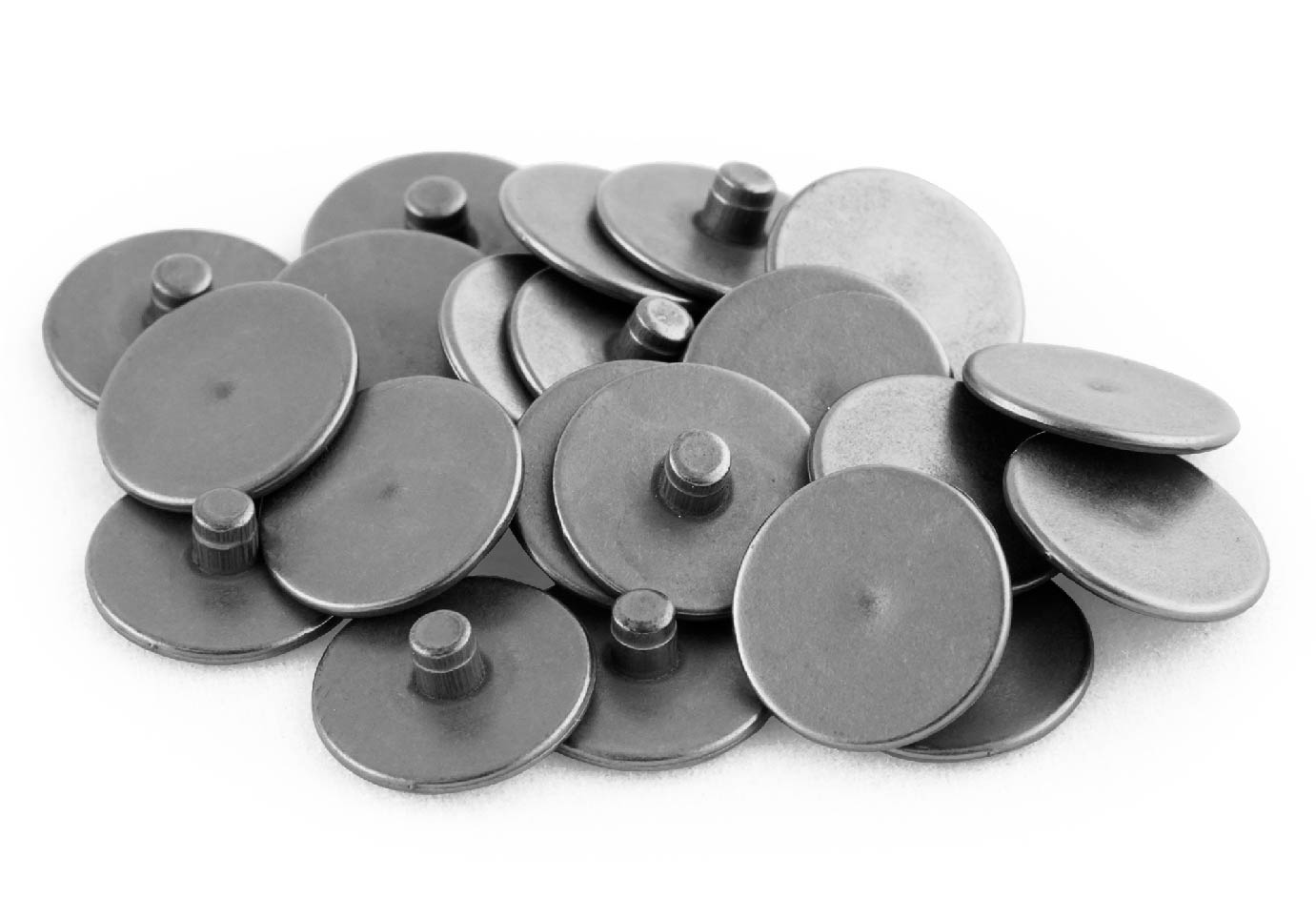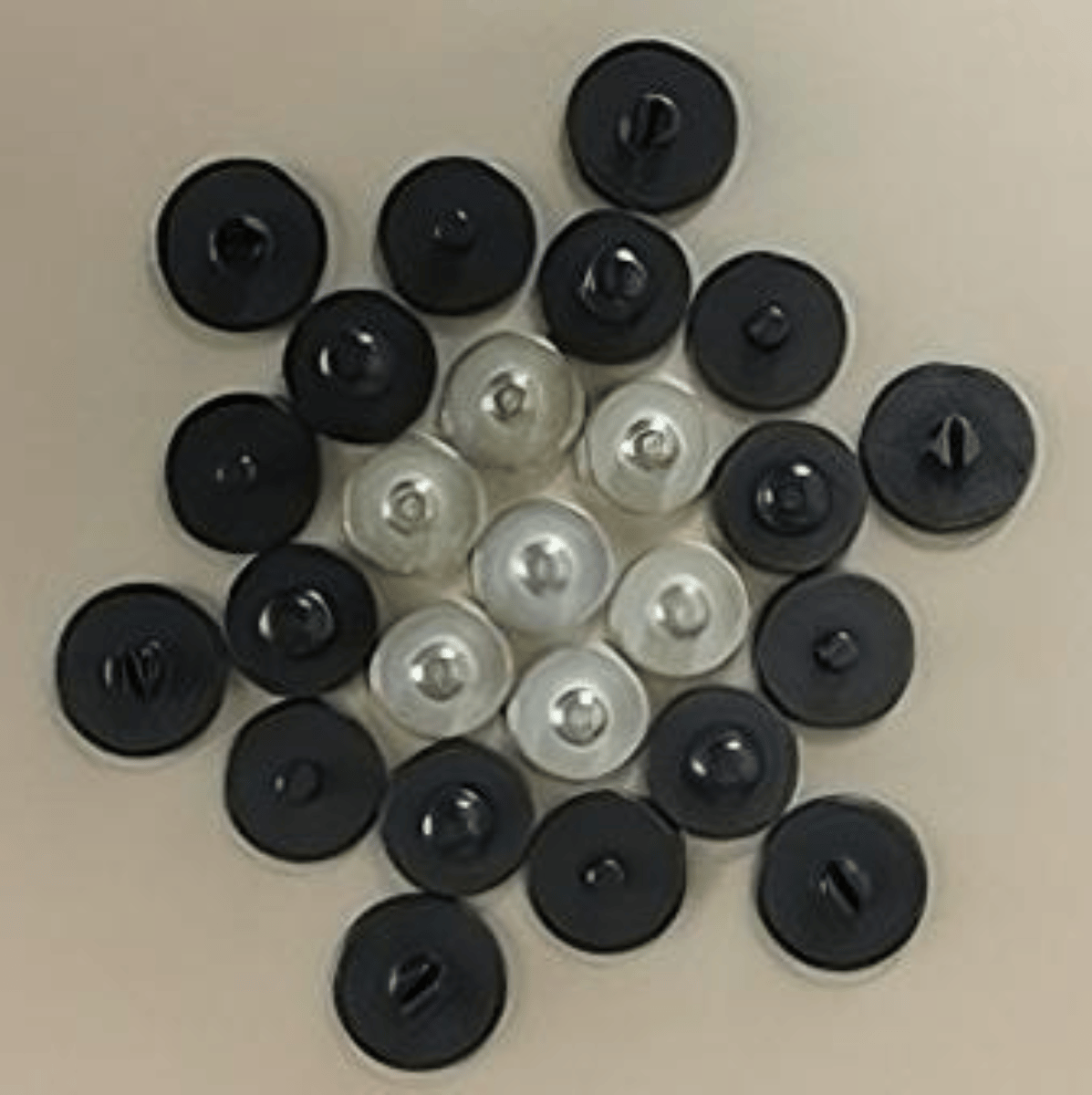Why aren’t all sensors “one piece” if this will reduce cost?
“One-piece” sensors do not allow for the same “clamping” into the electrode matrix that can be achieved in an eyelet/snap design. Using a “one-piece” sensor requires innovative product design and assembly techniques to assure that the sensor will remain in place during use.
What size sensor should I use?
The choice of a sensor is driven by performance requirements and cost. The larger the flange of the silver/silver chloride eyelet, the more surface area is available for conduction and the risk of “pull through” is reduced, while the amount of silver used is increased.
How much silver/silver chloride is needed for the sensors I will use in my electrode?
The amount of silver/silver chloride required is dependent on the application – whether it’s monitoring or active. For most monitoring applications, a silver thickness 0.075 mil on a glass-filled plastic molded eyelet will provide satisfactory performance to the AAMI EC12 requirements. It is recommended that the user validate the performance of the sensor in its final design configuration through stability and validation testing.





